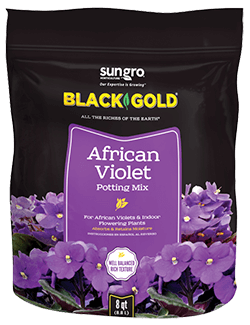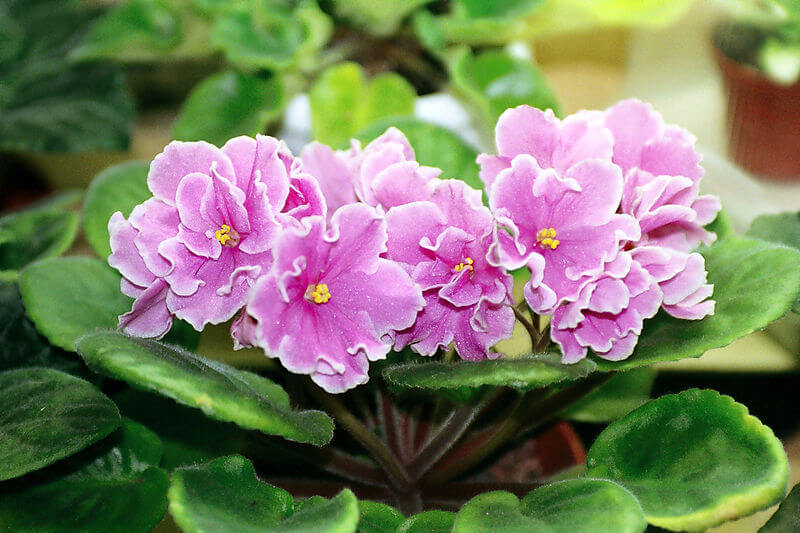
I once heard someone say that the African violet was “America’s Favorite Houseplant”. While I do not know if this is true, it has certainly been a house plant staple for years. The compact pretty plants bloom throughout the year with flowers that come in a multitude of colors. They are very specific and needy when it comes to care. The wrong soil, humidity, watering regime, and temperature can keep plants from blooming or even kill them, but get them right and you are in for a year-round floral show.
 As the name denotes, African violets, (Saintpaulia ionantha hybrids) originate from Africa. They were discovered in the late 1800s (in an area that is now Tanzania) growing naturally on shaded rocky ledges in the Usambara mountains. The original flower color on the plants was blue. It is believed that the first commercial production of plants occurred in 1893 in Germany. Seeds were imported into California from Germany and England in 1926. And now African violets are among the most popular house plants in the United States.
As the name denotes, African violets, (Saintpaulia ionantha hybrids) originate from Africa. They were discovered in the late 1800s (in an area that is now Tanzania) growing naturally on shaded rocky ledges in the Usambara mountains. The original flower color on the plants was blue. It is believed that the first commercial production of plants occurred in 1893 in Germany. Seeds were imported into California from Germany and England in 1926. And now African violets are among the most popular house plants in the United States.
Just like outdoor plants, proper soil is essential for plants to grow and be healthy. African violets seem to do best in a planting soil that has been created for them. Plants need enough water to keep the soil moist but not soggy and Black Gold African Violet Potting Soil fulfills this requirement. The blend of Canadian Sphagnum peat moss, compost, perlite/pumice, and earthworm casting is ideal.
The air temperature around African violets is important. It should be close to 70 degrees F. Good air circulation is another important factor; if there is not adequate air movement, powdery mildew and rot may develop.

Bright but indirect light is essential for African violets, so choose a spot near a window that’s out of the direct sun. The right light inspires overall good plant health and flowering. If an African violet does not get enough light, it will stop flowering and the leaf stems may elongate and leaves turn yellow. Keep a lookout for these symptoms. The plant will ‘tell’ you if it is not getting enough light.
Many plants like having their leaves sprayed with water, but the African violet is an exception. Large water droplets on the leaves will often cause brown spots and ugly mottling. Growers keep their potted plants in a saucer or on wicking mats, so plants can be watered from the bottom of the rather than the top.

African Violets are very easy to start from leaf cuttings and this can be a fun exercise for children. It is also a good way to get new colors and varieties by exchanging leaves with other growers. Begin by cutting a healthy leaf and placing the stem in a container of moist vermiculite, such as Black Gold Vermiculite. Roots will usually begin to form in about thirty days. After another 30-60 days, the stem can be placed in a small pot of Black Gold African Violet Soil. Leaves will begin to develop from the leaf base over the following month.
It would be difficult to think of another house plant that will provide the continuous blooms and variety of colors as an African violet. Most garden centers with a house plant section will have an area devoted to African violets. Check to see if your city has an African Violet Society. Attending a meeting is an excellent way to meet others with a similar interest. There are also African Violet Shows where members sell plants and rooted cuttings, which provides a way to increase your collection.
